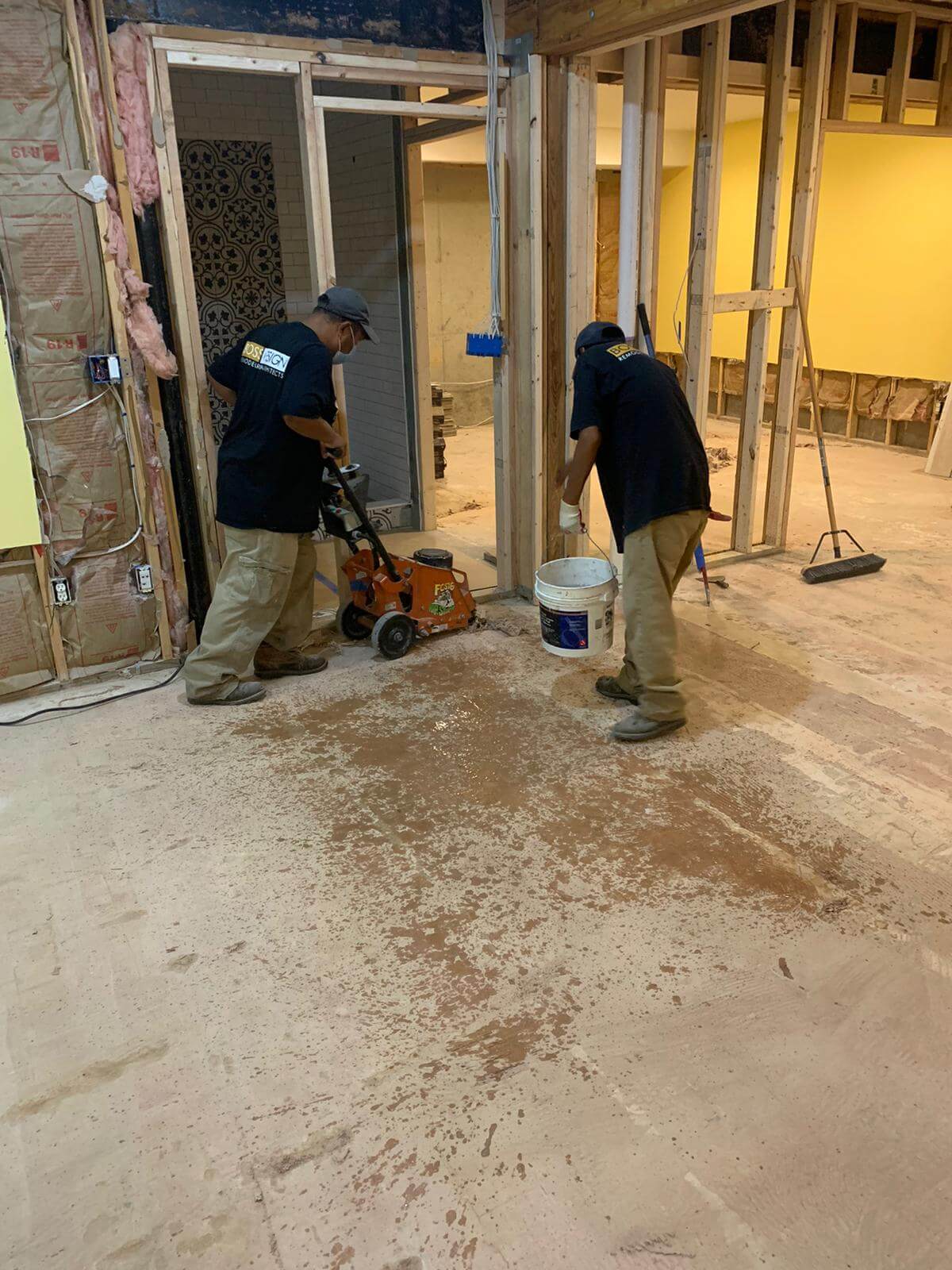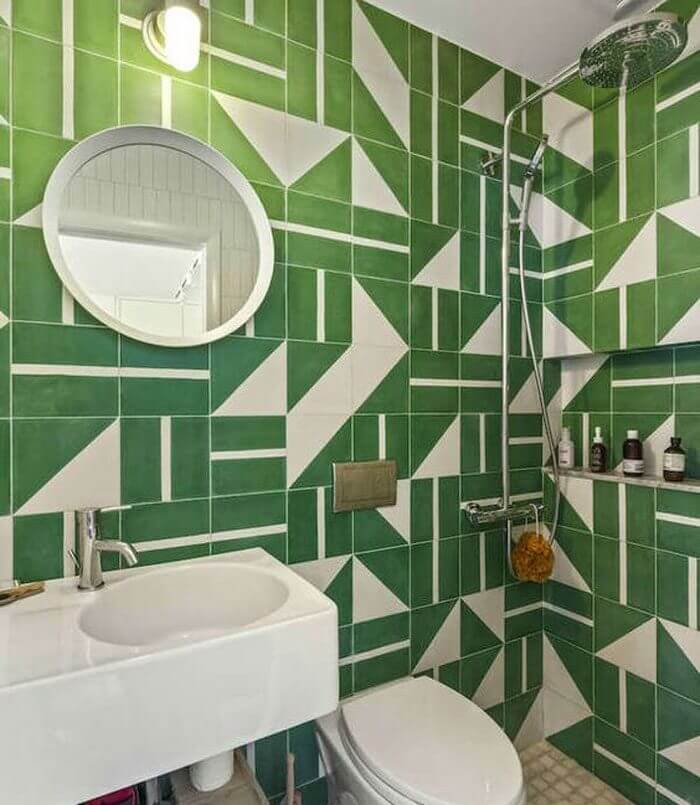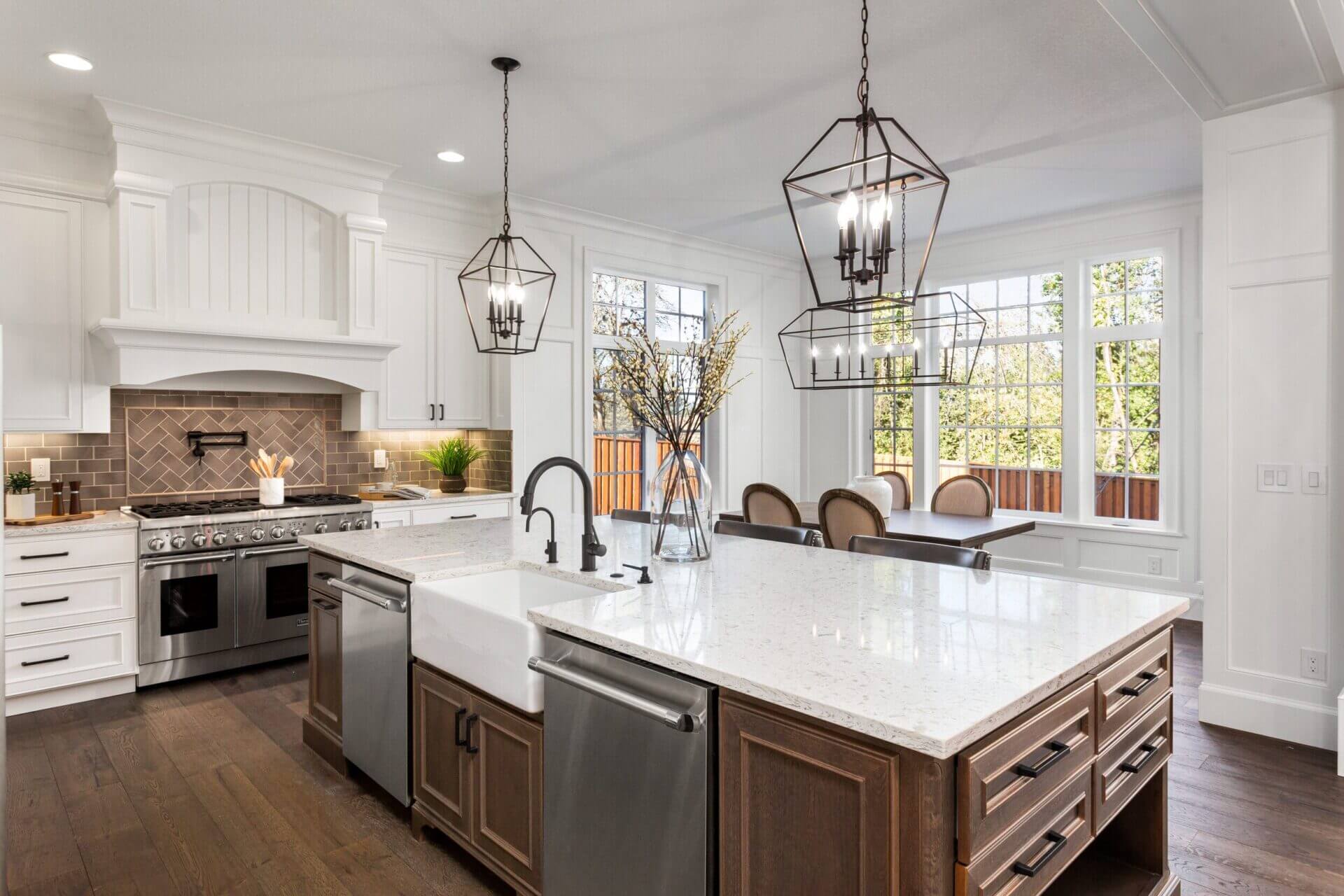
From Quartz to Wood: A Look at the Best Kitchen Countertop Materials
From Quartz to Wood: A Look at the Best Kitchen Countertop Materials
Balancing beauty and functionality in your kitchen often comes down to one key decision — the type of kitchen countertop materials you choose. Numerous materials may vie for your attention in the selection process, but some work better than others, depending on just how you use your kitchen space.
Subject to daily wear and tear, kitchen countertops take the brunt of your abuse in this frequently used room, so you need materials that can take it. With that in mind, let’s explore the different types of kitchen countertop materials and the advantages and disadvantages of each surface.
Manmade Stone Kitchen Countertops
Combining the best of natural and synthetic engineering, kitchen countertops made from manmade stone offer a beautiful look and improved functionality. Design options are seemingly endless, with manmade stone countertops offering unique opportunities to customize your kitchen with colors and designs that reflect your personal tastes.
Quartz and porcelain countertops confer numerous advantages in your home, but they also have some substantial drawbacks. Here’s what you need to know about each type if you’re considering kitchen countertop materials for a new build or kitchen remodel.
Quartz Kitchen Counters
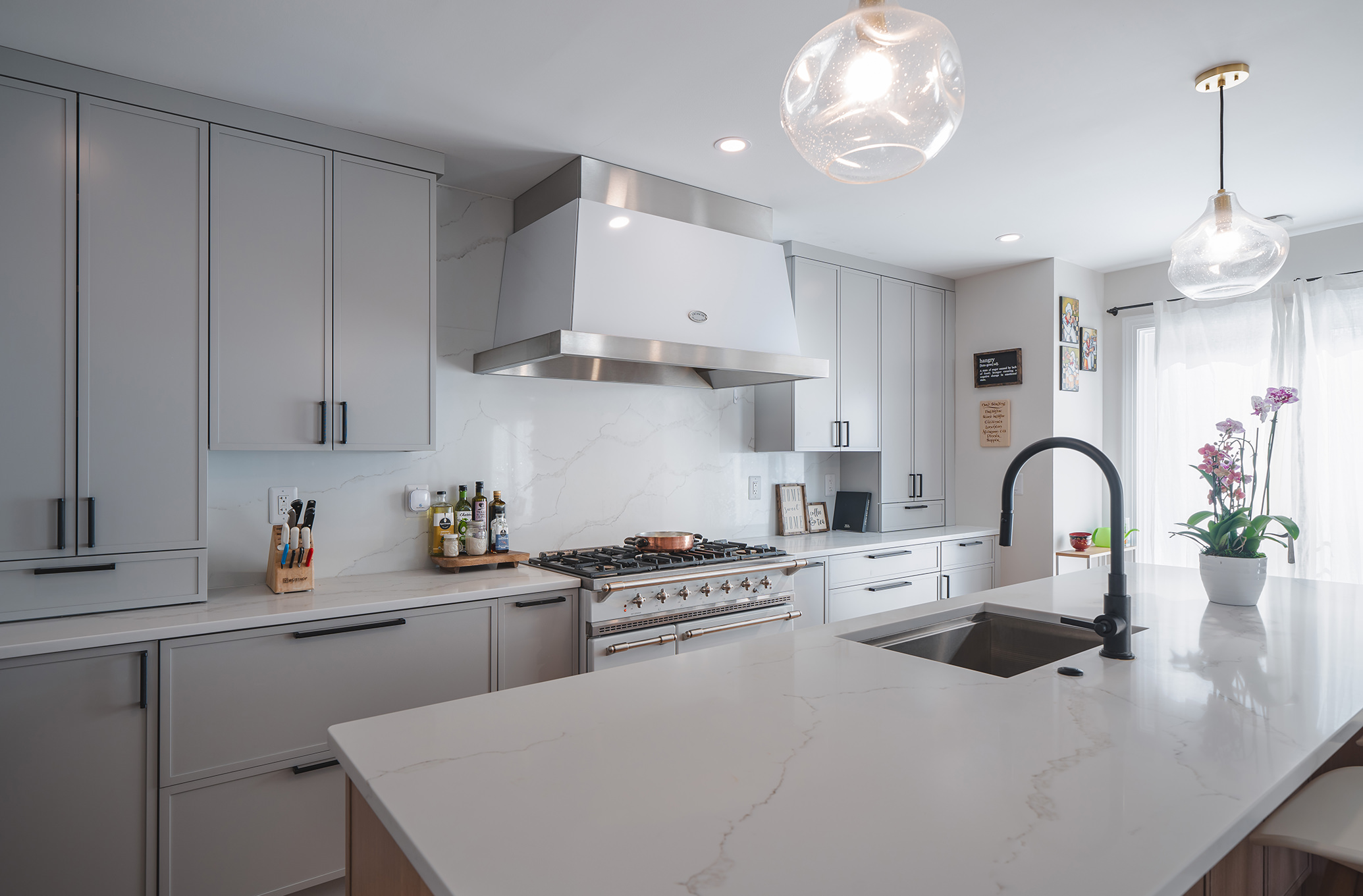
QUARTZ USED : EMERSTONE BORGHINI GOLD
Made from 90 to 95% quartz and 5 to 10% pigments, polymers and binders, quartz kitchen counters come in a vast array of colors and designs for decorative versatility, including Cambria, Silestone and Emerstone options used by Boss Design Center in your timeless kitchen design and renovations.
Quartz kitchen counters mimic the look of natural stone without the porousness, making them a more sanitary alternative to granite and marble that doesn’t quiver in the face of spilled wine, acidic citrus or intense spices. Though these kitchen countertops provide excellent resiliency, they’re not without their disadvantages, and we explore both below.
Brands we use in our projects
- Emerstone
- Silestone
- Cambria
Advantages of Quartz
Quartz countertops require practically no maintenance, delivering excellent durability at a reasonable price point. This kitchen counter material typically has a good warranty, making it even more cost-effective for contemporary households. Perfect for modern homes with high-traffic kitchens, quartz kitchen countertop materials also make a great choice for kitchen islands and breakfast bars thanks to a consistent design that ties rooms together.
The combination of synthetic and natural materials makes these counters less prone to chipping and cracking than their natural stone counterparts. Likewise, epoxy in the construction makes quartz nonporous, preventing staining from acids and spices that may damage other kitchen counter materials. The nonporous build also makes quartz easier to clean and leaves no places for bacteria to grow, which improves sanitation levels in busy kitchens.
Disadvantages of Quartz
Careless cooks may not like one key thing about quartz kitchen countertop materials — it doesn’t handle direct heat well at all. In fact, even brief contact with a hot pot or pan on the surface may leave noticeable discoloration behind that mars the look of your food prep space due to the epoxy used in making quartz counters. This sensitivity to heat expands to UV rays, so quartz doesn’t make a good choice for outdoor dining areas or near windows that let in lots of natural light.
Even though quartz kitchen counter materials typically have lower price points than more upscale materials, costs for some premium brands may add more to your renovation budget.
Installing these synthetic kitchen counter materials may cost as much, if not more, than natural stone in some cases, but without the unique look. Manufactured in factories that aren’t necessarily good for the environment, quartz countertops aren’t unique like natural granite or marble.
Porcelain Base Countertops

Kaolin clay fired at extremely high temperatures with feldspar, silica and mineral oxides creates porcelain — a manmade counter material that’s gained popularity in recent years.
Praised for their resistance to stains, heat and UV rays, nonporous countertops such as Dekton and Laminam are more sanitary like quartz without some of the drawbacks.
Porcelain base countertops, however, aren’t without their own challenges. Let’s look at the reasons why you want these kitchen counter materials and why you don’t.
Pros of Porcelain
In terms of toughness and resilience, porcelain base countertops rank highly due to zero maintenance requirements and a special design that doesn’t use epoxy, ensuring heat and UV resistance.
Print-based production enables deeper resolution than quartz options for more versatility in design. This flexibility means you can get porcelain countertops that look just like wood, natural stone and concrete for improved kitchen customization.
Just like with quartz, the nonporous construction prevents staining and inhibits the growth of bacteria and microbes for more sanitary kitchen countertops. The sealed nature of these kitchen countertop materials also makes them simple to clean with just a soapy cloth when you need to wipe down your space after food prep or casual dining. The ultra-hard materials also resist cracking and chipping for excellent durability in busy kitchens.
Cons of Porcelain
Though porcelain base countertops have extremely heavy construction, they’re actually thinner than other stone options — with porcelain measuring 3/4-inch thick compared to standard 1.25- to 1.5-inch thick natural stone designs. This means you need a more solid underlayment than with other materials, such as sturdy plywood that can support this heavy kitchen counter material. Professional installation requirements due to this slab work usually make these counters more expensive than other options.
Likewise, because only the top has a printed design, the base may look plain in comparison. Another drawback to porcelain is the potential for damage. Where chipped quartz only affects a small area that’s typically simple to repair, porcelain can easily crack if it chips, especially around the edges. Once this damage occurs, porcelain countertops have limited repair options due to their overall brittleness.
Natural Stone Kitchen Countertop Materials

QUARTZITE COUNTERTOP
Natural stone countertops, such as granite, marble and quartzite, bring classic flair to your kitchen countertops with their natural patterns and texture. These one-of-a-kind kitchen counter materials come in varying degrees of quality, so you can spend as much or as little as you want on your room renovation. Regular maintenance requirements, however, may make natural stone materials a no-go for homeowners who want hassle-free kitchen experiences.
Natural Stone Countertop Advantages
The main advantage of natural stone is the unique look offered by slabs of granite, marble, quartzite or soapstone. Unique patterning and colors on each slab ensure you have a completely exclusive look in your kitchen, and they usually have deeper colors than their synthetic counterparts for a more high-quality appearance.
When it’s time to sell your home, this investment may come in handy with potential buyers who value the top-notch kitchen countertop materials.
Resistance to heat makes natural stone kitchen counters excellent for home cooks and pros alike who tend to sit pots and pans down during intense food prep sessions.
Likewise, since these slabs come from nature itself, they make an extremely durable addition to your home and an environmentally friendly one at that. In fact, because granite and darker-hued natural stone are so prevalent, they’re usually both sustainable and reasonably priced.
The Disadvantages of Natural Stone
Though natural stone kitchen countertop materials resist heat with aplomb, their porous nature makes them more prone to staining. This means they have more intense cleaning requirements as bacteria and microbes may build up on the surface. Maintaining these surfaces helps prevent staining and sanitary issues, but this means sealing natural stone countertops once per year to preserve their integrity.
Cost stands as another roadblock to using natural stone as both materials and installation usually cost more than other choices — sometimes even twice as much for exotic options and quartzite. The sheer weight of these slabs requires sturdy support surfaces for the slabs, and if you’re furnishing larger kitchens, you may have issues finding matching slabs due to their one-of-a-kind nature. Some slabs may crack during fabrication or have other minor imperfections, making custom cuts difficult in some cases.
Wood Kitchen Countertops
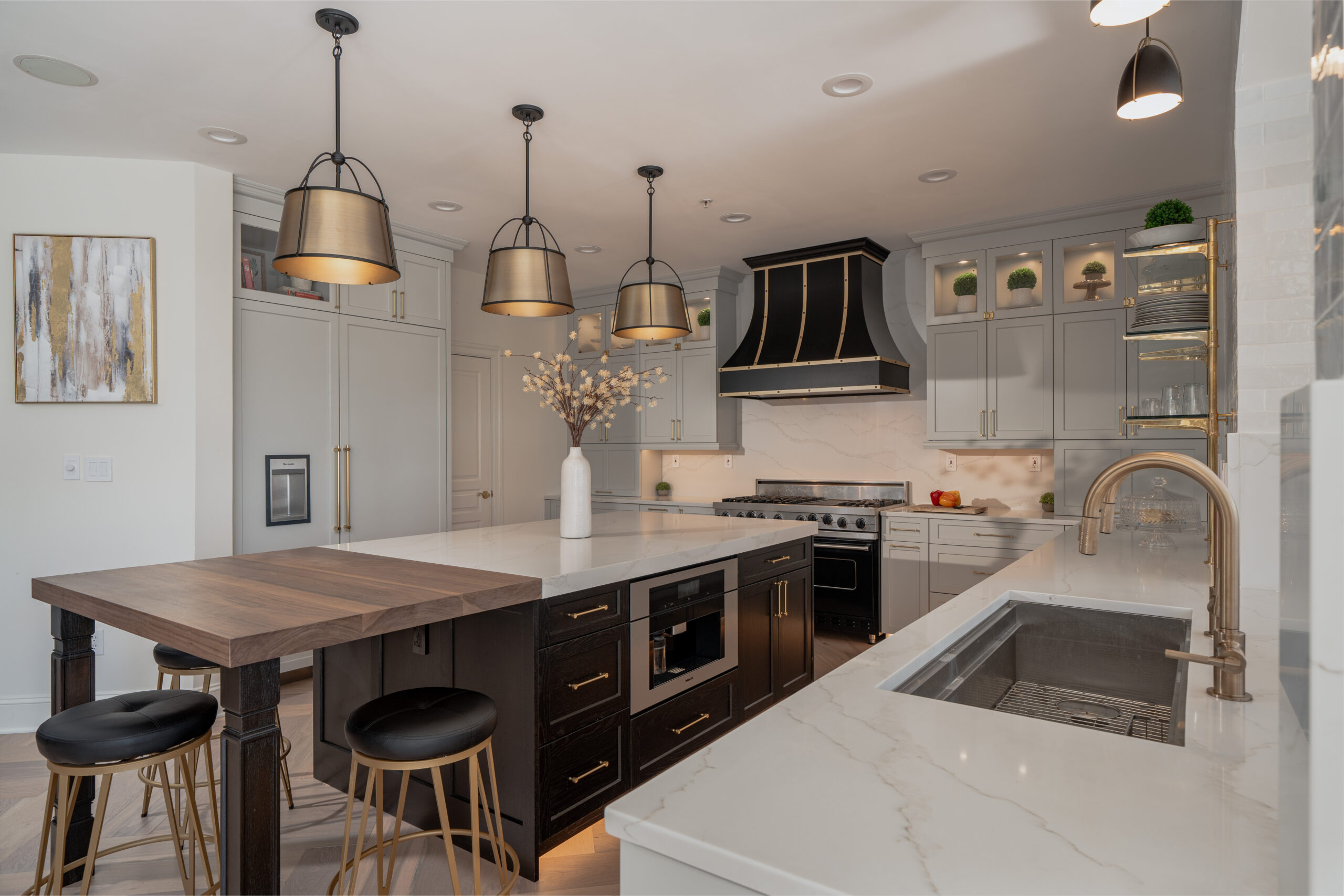
WALNUT SLAB
When you want to add warmth to rustic and farmhouse-style spaces, nothing beats butcher block or full slab wood kitchen countertops. Typically added as an accent to other kitchen countertop materials like natural stone and quartz, wooden countertops work well for kitchen seating areas and bar spaces but may incur damage in more high-traffic areas like beside the sink.
Here are the pros and cons of adding wood slab countertops to your kitchen.
Pros of Wood Counters
Adding wood counters during your high-end kitchen remodel provides aesthetic appeal to your living space, warming up the space and lending character in the process. Slabs made from walnut, oak and hickory mesh beautifully with natural stone and quartz alike, making them an attractive yet functional accent to a broader kitchen countertop scheme. This material works equally well for kitchen islands, bar tops and seating areas to give your kitchen contemporary appeal.
Environmentally friendly when responsibly sourced, wood counters cut down easily for a custom fit in your kitchen. This versatile material also allows easy refinishing when it incurs minor scratches, dings and stains, and you can often sand out the surface then reseal it with your choice of finishing oils for extra resistance to moisture.
Wood brings organic appeal to your space as well, feeling warmer to the touch than stone and absorbing sound for a quieter workspace.
Cons of Wood Slabs
While wood slabs look great and offer an eco-friendly kitchen solution, they have disadvantages, including vulnerability to water damage. The porous nature of this material makes it susceptible to staining and warping, not to mention bacterial build-up without proper cleaning.
Wood is also much softer than stone, so it incurs scratches and dents easily, especially in areas beside sinks or with heavy use as a cutting surface. Regular sanding, oiling and resealing may repair any damage, but it takes valuable time to perform these tasks. Limited heat resistance may result in burned spots if you sit down pots and pans on the soft surface.
The Best Kitchen Counters for You
Kitchen countertop materials come in a wide range of colors and styles well-suited to both classic and modern home designs, they are big part of the kitchen remodeling planning process. From top-tier printed porcelain for a custom look to quartz countertops for uniformity, natural stone for a unique design and wood for warmth and character, Boss Design Center has the kitchen countertop materials you need to build or renovate the perfect kitchen for you.
Discover how we can help you pick out the right colors and materials for your kitchen design today by requesting more information about our process and services.


